Ann Wason Moore: Need to find Gold Coast’s growth sweet spot
The Gold Coast is growing but we need to find the city’s sweet spot before it’s too late, write Ann Wason Moore.
Opinion
Don't miss out on the headlines from Opinion. Followed categories will be added to My News.
IT’S all about the sweet spot.
The secret ingredient to every great relationship is knowing precisely how to achieve mutual satisfaction. It’s the give and take, the push and pull, the in and out … okay, that’s probably enough. Especially given what I’m getting at is possible population control.
We’ve all been told that the Gold Coast is booming, we’re bursting at the seams with our new arrivals - whether they’re coming in from over the border or making their first appearance in our hospital delivery rooms.
The State Government’s latest projected “high growth” population figures show the city will have 660,890 residents by the end of this year and reach 1,076,192 people by 2041.
And we’re showing every sign of hitting those figures - and more. In fact, Gold Coast University Hospital’s mater-nity ward recorded its busiest month ever with 534 new babies born just in May this year.

The benefit of this boom is the economic opportunities it presents. The bigger our pop-ulation, the more econo-mies of scale we can build, the more services we can attract and the more jobs we can create.
Take schools as a simple example. More population means more students, means more teachers, means more classrooms, means more schools, means more con-struction jobs and on and on.
Of course, the flip side of this is the problems that accompany a population increase: the strain on our amenities, housing and infrastructure.
Just this month, Division One councillor Mark Hammel, who was elected last year to represent the Coast’s north, warned all levels of government have been “caught out” by the Gold Coast’s fast growth and are “too far behind” to catch up with infrastructure like roads and schools.
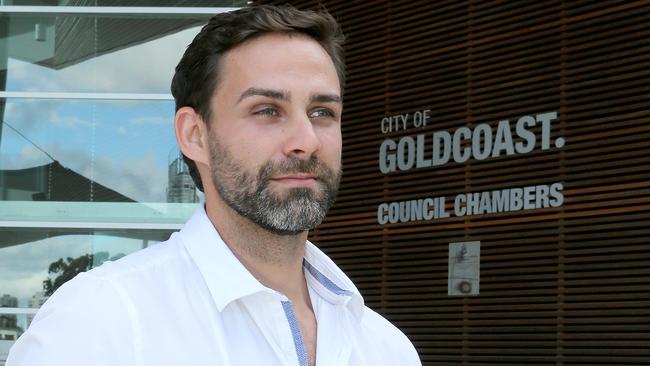
Meanwhile, a Bulletin report revealed Coast suburbs were recording the biggest population jumps in the state, and the pressure was creating ‘ugly developments’ with some more than 500 per cent above the allowable density. Com-munity groups say families are being squeezed into homes on 400 sqm blocks in the city’s north with few parks and community facilities, while older homes in the south sit in the shadow of new apartment towers.
So when do we say enough is enough?
To be honest, I don’t think we’re there yet. I believe there are still advantages to be reaped from a higher city population … but I’d like to see some figures on just how much more we can handle, even if and when we boost our infrastructure.
We need to figure out our sweet spot. I don’t think any resident - whether past, current or future - wants to see the Coast as a sort of super-sized Manhattan, a city composed almost solely of skyscrapers.
But we’re also not a slow-paced country town, nor even a solid suburban centre of quarter-acre blocks.
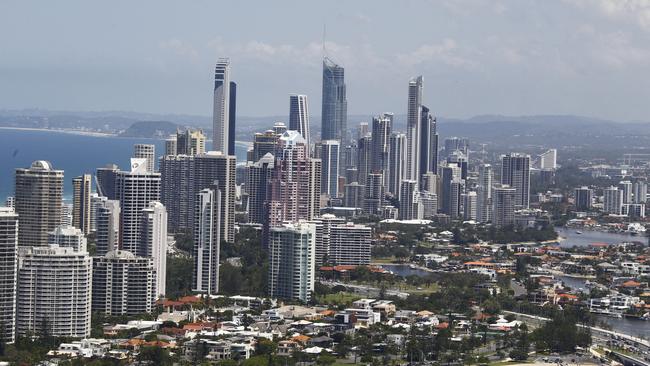
We are Australia’s sixth-largest city - but were built as a beach holiday town. That transition has been fast and furious, so before we throw ourselves headlong into the future - trying and failing to keep up with State Govern-ment growth targets - we need to figure out what we really want and what we really need.
We need enough people to create sustainable industries outside of tourism - our health and education sectors are the perfect example. Yes, they have grown almost exponentially but, to paraphrase the words of Queen, don’t stop them now.
Already we have had city leaders such as Helensvale-based councillor William Owen-Jones questioning whether State MPs should cap our city’s population, given council’s struggle to decide where to put new residents.
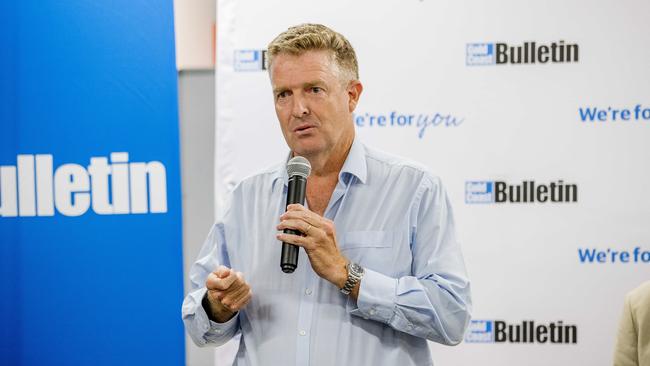
“It might be something our State friends take on board. We clearly have people saying ‘why can’t we be like Noosa and have a population cap?’” he said back in December 2019.
The problem is that every suburb wants to hang up the ‘no vacancy’ sign, yet simultaneously reap the economic rewards that come with a population boom.
We want it both ways … and instead of mutual satisfaction, we’re coming to a head of discontent. This city is struggling with a ‘fixed’ mindset, we’re operating from a place of fear that comes from years of change and growth.
What would help us accept these developments, both literal and figurative, is the promise of some surety and stability - some facts and figures that show how many people our city can comfortably handle and what benefits that would bring.
And also an assurance that the sky is not the limit … the sweet spot is.
If we can strike the balance of economic benefits, sustainable infrastructure and protection of amenity and environment … we’ll really see this city climax.
Why there's big trouble brewing in Nobby Beach
FROM the Gold Coast Highway to my own house, there’s trouble brewing in Nobby Beach.
On Thursday morning, the tension was palpable in my bathroom after I dropped a bomb … and no, it was not Wednesday night’s dinner.
Instead it was the story – published by this paper – that plans to build two neighbouring three-storey high-end shopping centres in Nobby Beach have now been expanded to a pair of 12-storey towers … four times the size allowed by the city plan.
As I read the news aloud of the plans filed with council this week that would see eight levels of residential units added on top of already-approved The Oxley and The Frederick shopping centres fronting the Gold Coast Highway and Lavarack Road, my husband was not happy.
“There goes the neighbourhood,” he said, literally foaming at the mouth. (To be fair, he was brushing his teeth at the time).
And judging by comments on social media, he’s not alone in his sentiments.
NOBBY BEACH TRAM SCRAM: 'WORRIED' BUSINESSES LEAVE AHEAD OF LIGHT RAIL BUILD

While the two 12-storey high-rises would be the biggest projects in our suburb’s history, they’re not actually the problem.
Instead, my husband - and the online coterie - argue these towers symbolise the beginning of the end. If developers are given an inch (in this case a 12-storey inch), it won’t be long before they take a mile … and this low-rise suburb becomes littered with skyscrapers.
But in the words of Taylor Swift: we need to calm down.
NEW TOWER PLANNED NEAR POPULAR COAST BOWLO
Personally, I’m not stoked with this new plan … but that comes more from a sense of betrayal - it feels like businessmen George Manettas and Daniel Veitch pitched one idea and then pulled the old switcheroo.
But beyond that, these towers do make a certain sense. They will be built just a handful of metres from a light rail stat-ion, will offer plenty of parking … and plenty of housing.
Taken on their own, I’m okay with them. (Although I still like the original plan better … what happened to the rooftop pool?) It’s what happens from here, assuming they are approved by council, that is the real issue.
Twelve-storey towers (which arguably are more mid than high-rise) along the highway is one thing, but creeping into the suburban streets is another.
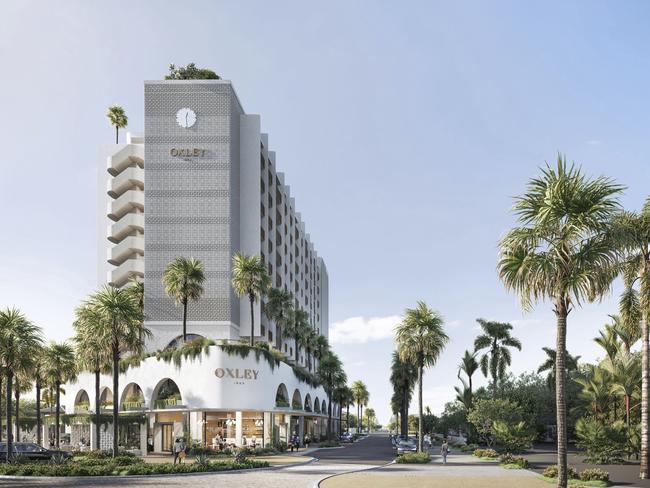
Many will argue this is exactly what they have been warning of when it comes to the light rail. That the overlay development plan will see the rail run roughshod over neighbourhood atmosphere and amenity. But where they see threat, I see opportunity.
As stage 3 of the light rail rolls out, it brings the potential for residents along the route to direct how their neighbourhoods could and should look: we can decide what should stay, what should go and what should be reimagined.
How? By providing input through the Draft Neighbourhood Framework: Broadbeach to Burleigh Heads Corridor. If you live in a suburb that is a designated Station Neighbourhood, you’re in luck.
Because believe it or not (and I know many will not), but the City of Gold Coast is trying to strike the balance between growth, infrastructure, sustainability and amenity.
Is it going to be perfect? That’s impossible, purely because there is no definition of city perfection on which we can all agree. But the more voices to speak up, the more likely we are to find city and suburb solutions that suit the majority.
As the draft paper states: “It is important the Framework is developed in collaboration with the community to reflect the views, values and vision for the Broadbeach to Burleigh Heads corridor.
“The next step is to gather community feedback on the draft Framework and to refine the vision and principles based on community input. The community’s feedback will also inform Station Neighbourhood Precinct concept plans .
“There will be a number of face-to-face and online opportunities for the community to be involved in and collaborate on in regards to future planning.”
Residents can start right now by completing a survey at gchaveyoursay.com.au/NFBB.
My favourite part of this process is the interactive map where residents can drop a pin and explain their big idea or what they love about Station Neighbourhoods.
Take this suggestion from ‘Chuda’: “Lavarack Road should be transformed into an eco-friendly pedestrian and bike oasis. By liberating this patch of bitumen from ‘the cars’ and giving it back to ‘the people’, this pathway would be transformed with streetscape and planting to create a world-class experience showcasing the amazing features of this unique station precinct for visitors and locals alike.”
As for those towers, if you don’t like them, drop a pin, complete the survey and have your say.
The light rail doesn’t have to be a one-way track to develop-ment but infrastructure that can secure suburban character.
There is change brewing in Nobby Beach and beyond … but, just like in my own bathroom, it doesn’t have to stink.
WHY SUBURBAN STREETS ARE RIPE FOR REDEVELOPMENT
IT’S the mystery of the missing middle … and it could be the key to unlocking our suburbs.
While continued controversy over town planning focuses either on high-cost high-rises or low-cost affordable housing, the truth is we are missing the meat in the perfect property sandwich.
It is no secret that my favourite pastime is spending some quality time on realestate.com.au. I’m not looking to buy or sell, I just like to window shop.
But when it comes to properties priced between $600k and the high $900s, there really is nothing to see here.
Sure, there are a few homes based along the coastal strip in the $700-800s, but the bulk of these are what is affectionately described as “renovate or detonate’’. In other words, the total cost to the ultimate homeowner is more like the mid-million mark.
But as the light rail comes down the coastal highway, so too does the opportunity to fill this gap.
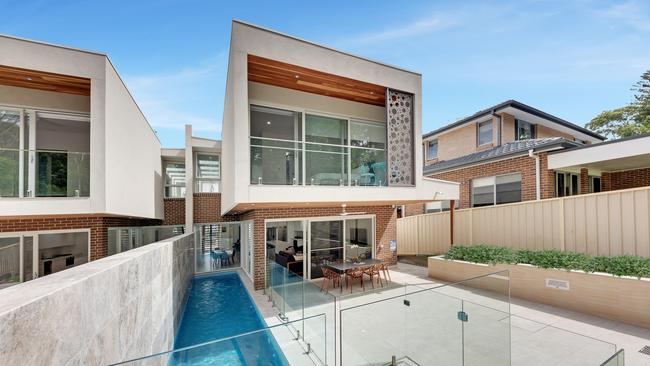
Zoning changes mean that even suburban streets are ripe for redevelopment. While that does not translate to a cul-de-sac next door to a light rail station becoming home to a skyscraper, it does mean that neighbourhoods once home solely to single-family dwellings could soon be welcoming new additions.
Think of it as the dawn of the duplex – the solution to our missing middle.
Duplex, villa, semi-detached home … whatever your favoured expression, the meaning and opportunity is the same. It’s a mid-priced option requiring no further renovation that is perfect for empty-nesters, young professionals and starter families alike.
MORE FROM ANN
Coast’s greedy landlords sending suburbs belly-up
Unlikely friendship with light rail opponent
Does border bubble keep Coast safe?
They come complete with their own small back yard, can easily fit three to four bedrooms and usually don’t require hefty body corporate payments.
More importantly, when it comes to the Gold Coast, they are in a central city location rather than sprawling ever further west and north, away from amenities and infrastructure.
If the Coast seizes on this opportunity, we’ll be achieving what few other Australian cities have managed.
Indeed, CoreLogic head of residential research Eliza Owen says all of Australia is being dogged by a persistent “missing middle” when it comes to property types.
She says there is a gap in new developments providing low-rise and medium-density housing options, such as townhouses and duplexes.
“Medium-density housing options can be important for young families who seek a more affordable housing option close to city centres, but require more space than in a unit, or older Australians wishing to downsize in their current area of residence to reduce housing costs in retirement,” says Ms Owen.
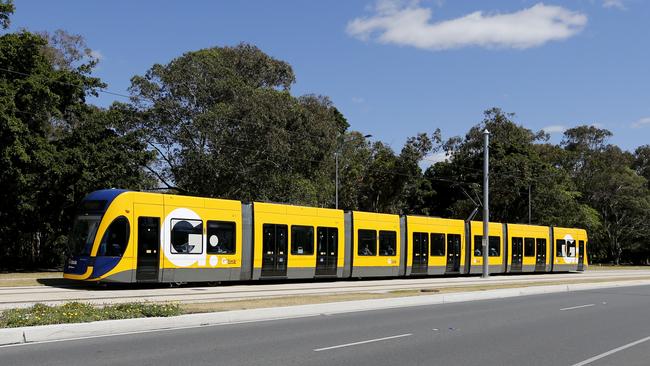
As populations continue to converge in metropolitan regions, she says the demand for diverse housing options is likely to grow.
“If development continues to focus on the two extremes of density, metropolitan areas may see an erosion of diverse age and family demographics,” she says.
In other words, there goes the neighbourhood.
That is exactly why increasing the population density of our coastal suburbs serviced by the light rail is a recipe for success.
More people means more patronage for self-sustaining suburban cafes and restaurants, along with village-style retail precincts and events.
But, of course, there is a catch.
While these future property projects might not require the stringent engineering expertise required by a high-rise (which makes them all the more appealing to mum-and-dad developers looking to downsize their home and upsize their bank account), they require every bit as much planning and scrutiny as any skyscraper.
Does a duplex need to be an architectural work of wonder? No. But does it need to provide ample parking and an attractive kerb appeal? Hell yes.
Given these rezoned suburbs are, by requirement, close to transportation infrastructure, the expectation is that not every new resident will need a car. But the reality, of course, will be different.
The truth is that no matter how amazing and successful the light rail is, it is still going to take some time to lose our reliance on cars – and nothing ruins a perfect streetscape or neighbourhood vibe quite like cars on kerbs.
Every duplex development needs to provide the same amount of parking as a single family home and needs to ensure that site coverage is not maxed out, leading to a reduction in green space in our increasingly urban suburbs.
While the community is actively engaged with high-rise development and low-cost housing, let’s not forget to keep our eye on that missing middle as it gradually gets filled in.
Just like the best sandwich, when it comes to creating the perfect city it’s what is in the middle that makes it.



